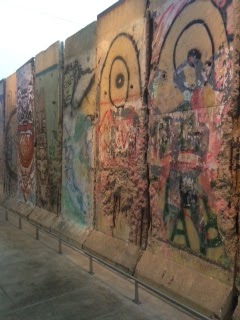Chad Ellwood
Our group went for a trip to the White House and the Portrait
Gallery on Friday the 6th, and it was quite the back to back. As great as the
White House was and as much as I have always dreamed of stepping foot inside
the home of the most powerful man in the free world, I surprisingly more
enjoyed my time at the Portrait Gallery. The Portrait Gallery is also home to
the Smithsonian American Art Museum. I could have spent a solid week there,
especially in the modern art section. Some of the pieces were mind-blowing -
this is the greatest art in America and I was seeing it up close and in person.
Some of the abstract work was great and there was an incredibly cool piece that captured my attention and is shown below. Another one of my favorite pieces was a high-resolution
collection of three photographs, showing the NSA, the National Reconnaissance
Office, and the National Geospatial Intelligence Agency. The photographs captured the sheer breadth of
the American intelligence operation and were both beautiful pictures of intimidatingly large operations in our backyard. The portraits were amazing as
well – I especially enjoyed the American Presidents exhibit. The different
artists presented each president in such a unique way and much of it spoke to
the time that the art was done. There was also a bust of Rachel Carson - one of my favorite historical figures of all time and an environmental hero. It was a heck of a day and I really appreciated
having the chance to get to see some of the great works in person.




.jpg)












